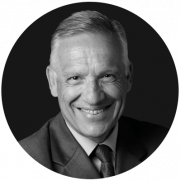In her commencement speech to the USC Viterbi master’s class last May, Megan Smith, the third chief technology officer of the United States, urged the graduates to become engaged in “heroic engineering.” This stunning concept is now the top entry in a Google search on the subject.
Heroic engineering. I should surely know something about the adjective in this phrase, given my Greek heritage. But in today’s world, where engineering and technology empower everything we do, heroic engineers are not mythological heroes. Rather, they are those among us who, motivated by a noble sense of purpose, apply their formidable skills and knowledge to better society.
Advancing useful purposes is quintessential to engineering and technology. The frequent reader of this column would know by now the definition of technology I find most apt: “leveraging phenomena for useful purposes.” Brilliant technological advances have been motivated by a variety of needs and purposes. But an increasing subset among them involves moral purposes, purposes that help society at-large — purposes associated with heroic engineering.
Such a mindset has found a fertile ground in the USC Viterbi School of Engineering. Consider:
• The NAE Grand Challenges Scholars Program, co-founded by Duke University, Olin College and USC Viterbi in 2009, and now spreading globally, includes societal impact as one of its five objectives.
• Two years ago, the Min family established at USC Viterbi the Min Family Engineering Social Entrepreneurship Challenge to address societal problems through social entrepreneurship. This spring, a team of students traveled to Texas to learn about the impact of natural disasters like Hurricane Harvey and then engineer better solutions in disaster relief.
• The USC student chapter of Engineers Without Borders has been actively involved for several years in solving problems for disadvantaged communities.
• Professors Shri Narayanan and Yan Liu are using artificial intelligence to address the vexing opioid problem. Researchers at USC Viterbi’s Information Sciences Institute, the powerhouse of information sciences, tackle how information technology can help combat human trafficking. And CAIS, the USC Center for Artificial Intelligence in Society, a vibrant partnership with the USC Suzanne Dworak-Peck School of Social Work that is co-led by Professor Milind Tambe, is a global trailblazer on the use of AI for social good, from preventing HIV infection in homeless youth to the protection of endangered animal species.
Many of these and other examples are found in this issue. The hue of moral purpose colors many USC Viterbi students and faculty: a brilliant canvas full of spirit, remarkable skill, intellect, diversity and superb aptitude that is changing the conversation about engineering. In an upcoming initiative, we plan to challenge this and future cohorts by asking them to volunteer 100,000 hours per year — 100,000 hours per year of heroic engineering.
In these efforts, we are blessed with remarkable inspiration from many USC Viterbi constituents. I will single out a few: Mike Markkula, B.S. EE ’64, M.S. EE ’66, co-founder of Apple, who helped found a groundbreaking ethics center at Santa Clara University. Our school will proudly honor Mike this year at the USC Viterbi Awards. A parallel incarnation of the Markkula Center for Applied Ethics has now sprung at USC through the Jerry and Nancy Neely Center for Ethical Leadership and Decision Making, a collaboration among the USC Viterbi, Price and Marshall schools led by ISE and Price Professor Ali Abbas. Then there’s the late John O’Brien, a heroic engineer par excellence, who devoted his professional life to USC Viterbi and for whom we named the new nano-
fabrication facility at the sparkling Michelson
Hall to inspire future generations.
Cultivating knowledge, skills and mindsets is an overarching objective of the mission of USC Viterbi. Heroic engineering has brilliantly become an integral part of these mindsets.




